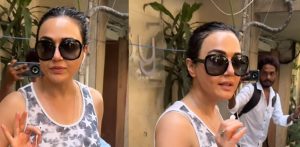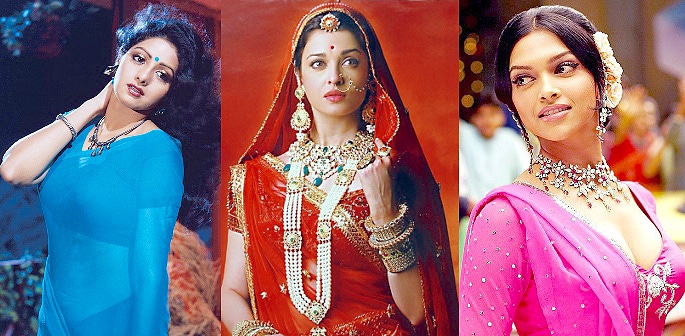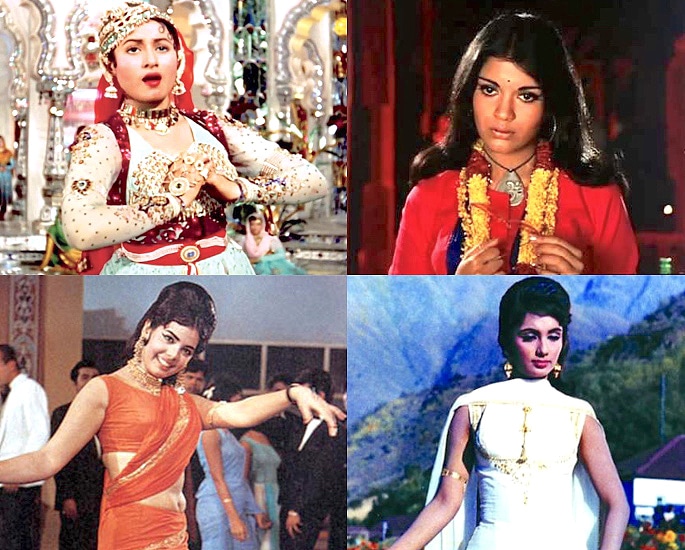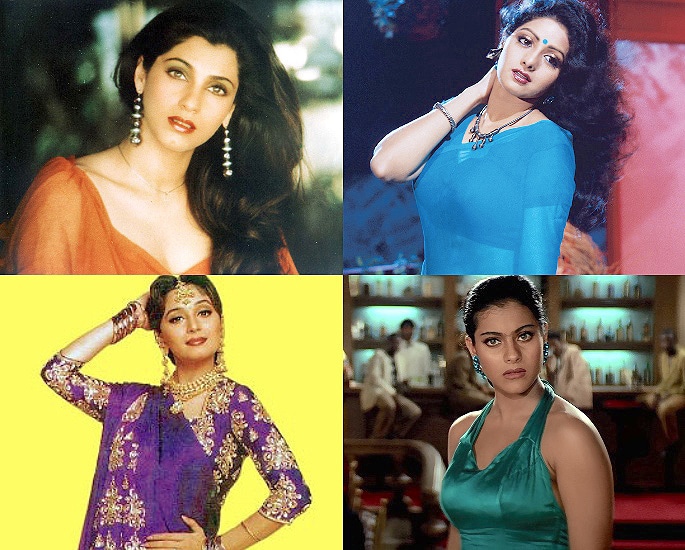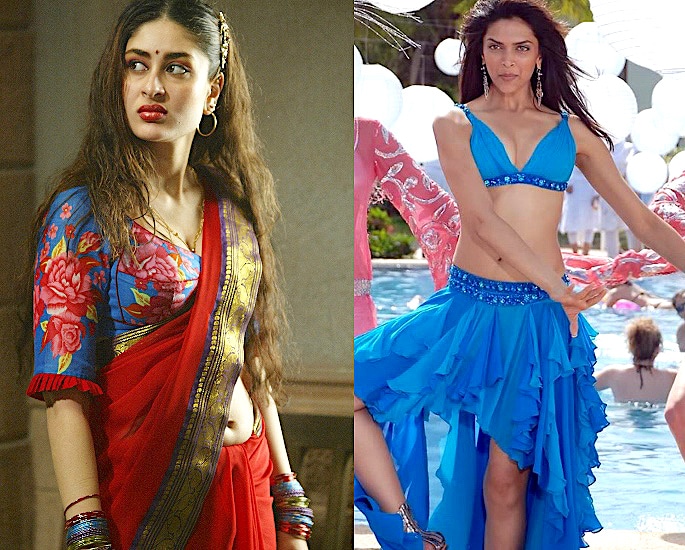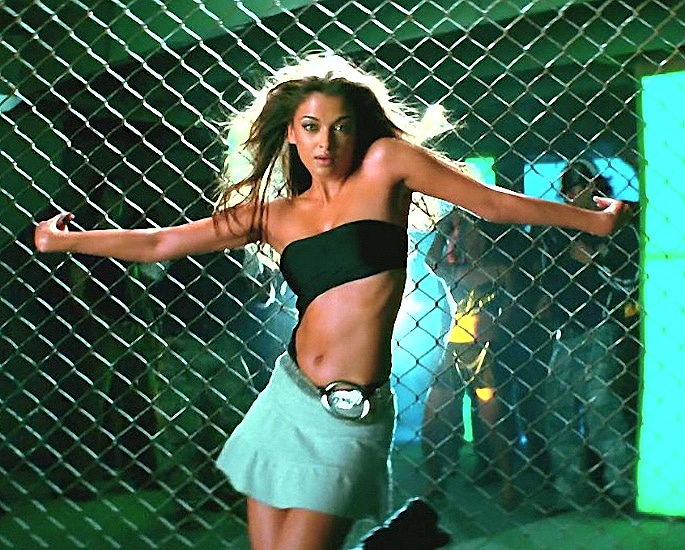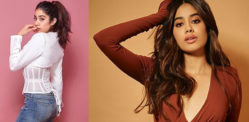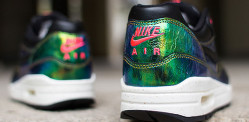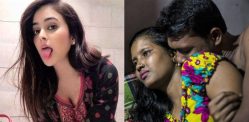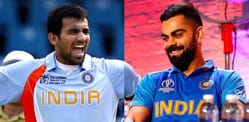"Hemlines were becoming shorter."
The history of Bollywood fashion has seen many new trends start, some disappear and even a few resurface later.
The evolution of fashion in Bollywood has always been impressionable on fans. What the stars wear is of huge interest to them, and many even want to emulate their looks.
Each decade has brought a certain style and vogue of that specific period.
Some even compare the changes in Bollywood fashion to those in Hollywood. As some Bollywood stars have an international platform, the Hollywood influence is increasingly apparent.
This has promoted space for dresses to take over Bollywood fashion in the 21st century. Making it rare to find a saree on the red carpet.
So, let’s take a look at a historical timeline of Bollywood fashion and see how it has evolved through the years.
Stylish and Colourful – the 60s and 70s
Vibrant colours dominated this era. Bollywood fashion went through a very experimental phase. There was the influence of shorter and more figure-hugging clothing.
Actresses of this period left their mark through iconic fashion statements.
Sarees and ethnic wear were a major aspect of Bollywood fashion during this 60s and 70s.
Mumtaz dressed in an orange saree in Brahmachari was a memorable sight. For decades this look has kept its name as one of the best in Bollywood.
Madhubala wearing the Anarkali kurta in Mughal-e-Azam (1960) also left its mark. Winged eyeliner and voluminous curled hair were a favourite accessory of this decade.
During the same period, actress Sadhana wore churidars with kurtas. Her iconic fringe became a fashionable accessory – the Sadhana cut. Fitted clothing reflected the confidence of the women across these decades.
For the Western look, miniskirts were among the signature styles of the time. There was a radical change in the way women were dressing. The splash of colours and hippie fashion took over Bollywood.
Meher Castelino, a veteran fashion writer, recalling old memories says:
“The miniskirt and hot pants brought a serious transformation in the way people dressed during the 1960s.”
“Hemlines were becoming shorter. In a way, I could say it was the trigger that broke the moulds of traditional society.”
Churidars were worn with fitted kurtas. Flimsy dupattas added a nice detail to this look. Sarees made a short appearance with plain pastel prints and the 3/4 sleeved blouse.
The 1970s had the famous bell bottoms trend raging across continents. Early years of the decade switched the styles a bit.
In came the flared trousers, skirts and the crop tops.
A fashion trend emerged when Dimple Kapadia wore a crop top with polka dots and a miniskirt. Her ‘Bobby print’ look from the 1975 namesake film was memorable.
Flared trousers were also paired with tight shirts. The fashionable looks from the ’60s continued to shine during this decade as well.
Culottes and tunics made their way to Bollywood fashion.
Skin-tight T-shirts with floral patterns were a favourite. They usually had butterfly collars.
Saira Banu and Hema Malini were often wearing floral prints. Floral patterns had been a delicate part of fashion then and can also be seen as a favourite even during modern times.
Zeenat Aman’s looks from Hare Rama Hare Krishna (2971) inspired many fashion choices. Her out-of-the-box looks became a fashion statement and made her stand out. Her wardrobe included hoops and retro looks. They defined boho-chic.
Designer Sarees to Shoulder Pads – the 80s and 90s
It is during the 80s when sarees took the spotlight. Western fashion made appearances on the fringe.
To make a blockbuster, making movies abroad was the road to take. Designer sarees and quality music made sure the movie was a hit.
The look of the timeless diva Rekha in Silsila (1981) was phenomenal.
Sridevi Kapoor’s elegant chiffon sarees caught the heart of many fans. The song ‘Kaate Nahi Kat Te’ from Mr India (1987) featured one of Bollywood’s glamorous and iconic wet saree scenes. It saw Sridevi in a blue chiffon saree, singing and dancing in the rain.
The’80s also witnessed a shift from sarees to western attire. There was a markable change in the way actresses dressed.
This was influenced by famous actresses such as Tina Munim Ambani and Dimple Kapadia. Makeup was kept minimal and cuts were stylish.
Bollywood fashion also embraced gym wear in this period. Sweaters paired with leggings became a mainstream look. Shirts came with wide collars.
Formal clothing including coats and suits featured shoulder pads. The protruding edges made the dress an epitome of elegance. It was a widely recognised look even in Hollywood.
Fishnet stockings and figure-hugging trousers also made a brief appearance. Shoulder pads continued to be a favourite look in the following decade.
The ’90s began with films like Dil (1990), Baazigar (1993) and Hum Aapke Hain Koun..! (1994). The fashion choices largely became variable.
Madhuri Dixit dressed in a memorable purple saree was a hit for Hum Aapke Hain Koun…!
Her fashion style created a buzz in India.
Alongside this, Aishwarya Rai brought a new saree trend to India through Hum Dil De Chuke Sanam (1999). The latter half of the film shows her quintessential saree collection. Net sarees became an instant favourite.
Western looks continued to make their way into Bollywood fashion.
High-waisted trousers and chokers made an enormous comeback. However, costumes such as lehengas and chiffon sarees could still be seen in films.
Many actresses were seen wearing off-the-shoulder tops. These were paired with high-waisted trousers or jeans, adding an instant splash of beauty to their look.
Coupled with the prominence of denim, dungarees also became fashionable in Bollywood.
Jumpsuits had their moment as well. They were worn with buckle detailing or came cropped and flared for an edgy vibe.
Bollywood Fashion in the 2000s
Undoubtedly, Bollywood has gone through numerous phases and transitions. With the dawn of the 21st Century came the question ‘Who are you wearing?.’
There was a great influx of international designers and influencers. Manish Malhotra, Sabyasachi and Masaba are a few of them. The methods changed entirely from how they were previously done.
In the 2000s, fashion designers attained an integral role in films. A film was incomplete without the outfits being sourced from an established designer. The trend peaked in this decade.
Hemlines and crop tops also made a comeback. Tinted glasses and thin eyebrows were seen as vital accessories on most artists. It was a great mix of both Western and Indian culture.
Lead actresses of the time took a great interest in experimentation. Aishwarya Rai, Kareena Kapoor Khan and Rani Mukerji were a few of them.
Kareena Kapoor in Kabhi Khushi Kabhi Gham (2001) wore iconic Malhotra designs. Lulla designed the sarees that Aishwarya and Madhuri Dixit wore in Devdas (2002).
The red banarasi saree worn by Dixit in Devdas was an amazing design. These are a few examples of Hindi cinema fashion influenced by prominent designers.
Meanwhile, the popularity of social media was on the rise. Along came the fashion bloggers as well. Actresses began to pay attention to their appearance in public.
Later that decade, they were hiring personal stylists. Within a fraction of the time, the trends had drastically changed. Influences of western clothing became a common sight.
For example, Deepika Padukone’s fashion choices became notable at the Filmfare Awards. She took the award of ‘Best Female Debut’ for her breakthrough film Om Shanti Om in 2008. She carried sarees and western wear with elegance.
Kurtas were worn with huge collars, as seen in Rani Mukerji’s film Bunty Aur Babli (2005).
They also came in bright colours. But this look lasted only for a short while.
Every decade fuelled new trends, the 2000s being prominent in this area. Actors and actresses held the status of style icons. This decade proved that fashion is cyclical.
The Fashion Recycling Decade – the 2010’s
We have observed many trends making a comeback. Does this make it the era of recycled fashion?
The 3/4 sleeved saree blouse made an appearance again after fifty years. Vidya Balan had worn one, which further demonstrates the revival of the classic style.
These modern trends have taken their inspiration from western fashion too. Palazzo pants, crop tops and strapless gowns have returned. Classic dressing has made its way to the modern era.
Trends used to initiate from Indian cinema before the internet took over. With social media came the abundance of western clothing. Designers focus on what’s trending mostly.
Through smartphones, women stay connected with trends. They have become smart consumers. They are highly aware of the trendy look they are going for.
The availability of the internet has made information available 24/7. One can instantly know what a celebrity wore to an award show. Massive success has its ways.
For example, Sonam Kapoor Ahuja is famous for her trendsetting looks. Her style began to gain recognition after her appearance at the 2011 Cannes Film Festival. She has been sporting phenomenal looks ever since.
She became a global icon in a very short time and made several appearances on the cover of Vogue India. Her fashionable looks are distinguishable to anyone with access to social and electronic media.
A dress that Sonam wears will become an instant hit on social media. It will, in turn, increase the demand for the dress. Within seconds, the dress is all sold out.
Hence, what a celebrity wears matters a lot in this day and age. Through digital media, designers can showcase their latest collections.
Actresses portray the dresses with grace and elegance.
This is a major cause of the shift from sarees to dresses in Bollywood fashion.
Stars have begun putting a lot of effort into their red carpet looks. Personal stylists have become highly important. Award ceremonies have witnessed a wide variety in fashion styles throughout the years.
Bollywood, Culture and Beyond
During modern times we see Bollywood stars rarely wearing sarees. The trends have shifted away from ethnic wear. What’s the reason behind it?
Is there a loss of Desi culture, with designers now taking the dominant role?
There is an ongoing debate on this topic. Many believe that sarees are a part of Desi culture. To replace it with dresses means diminishing this.
There has been a huge influence of the west on Bollywood culture.
This impact is evident through film and music in Indian cinema.
In a rather dormant manner, Bollywood affects our thinking. The Indian audience heavily gravitates to the world of films. Stars are under a microscope, whether it is their fashion sense or lifestyle.
Most childhoods are imbued with a distinct memory of Bollywood fashion. The was use of sarees infused character and depth to the cinematic experience. But gradually Western outfits have intervened, a far cry from the Desi tradition.
Is There a Loss of Desi culture?
Take Aishwarya Rai’s wardrobe transitions, especially her traditional Indian wear in the movie Devdas. But in Dhoom 2 (2006), she adopted a Westernised lookw
Cinema is also taking a rather realistic approach. This is another reason why designers are restricted from setting the trends like they used to do.
People in the past were not exposed to styling and fashion as in the present. Setting a trend through the big screen was the way to go. But it is very different post the millenium.
Bollywood actresses often wear extravagant dresses on the red carpet. There is more western influence than traditional. Why do they choose western clothing?
This is because global persona and exquisite Indian beauty are admired by international designers. These designers often invite them to their shows. These international brands acknowledge the importance of these actresses.
These fashion divas are the mass marketing phenomenon. Their social media influence can promote any brand. This, in turn, creates a platform for actresses to put forward new trends.
This has led to a rise in western wear among Indian celebrities. A trend that does not appear to be diminishing any time soon.
Wearing Western outfits also provides global recognition.
Actresses get a lot of attention when they wear an international brand. They are well appreciated across borders.
Their love for experimentation has taken them to new heights. The trends worn by them spread like wildfire. The designers recognise this pattern and work their magic accordingly.
Ethnic fashion has increasingly evolved too. The force of Bollywood has been a strong catalyst for this. The adaptability of these styles has made them more acceptable.
Bollywood actresses do not stick to one genre of fashion. Their red-carpet dresses have had a series of transformations. Most actresses wear dresses instead of traditional wear.
But we do not see the traditional clothing vanishing anytime soon from Bollywood fashion. The trend of wearing dresses is most likely here to stay.














